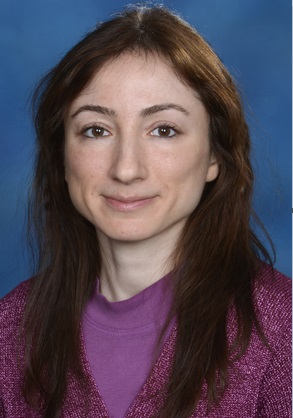Outcome-Driven and Risk-Adapted Personalized Treatment Planning
Presentations
WE-E-BRC-0 (Wednesday, 7/13/2022) 11:15 AM - 12:15 PM [Eastern Time (GMT-4)]
Ballroom C
In this session, we start with a physician's view and tangible evidence on the necessity of multiobjective outcome-based treatment planning and current issues with using population-based dose-volume constraints in radiation therapy (RT). In the second talk, we give a physicist’s description of a cutting-edge technique that directly uses tumor control and normal tissue toxicity models, instead of current population-based dose-volume metrics, in treatment planning. And, in part 3, we end with an example of complexities that need to be considered when each toxicity model is being developed, especially when the adverse outcome manifests long after treatment. Each presentation touches on distinct cancer types. While the treatment-related details vary largely from one tumor type to another, the talks illustrate the need for outcome-based personalized treatment planning in all cases.
--First Talk: Lymphoma RT is a unique field where the importance of outcome-based planning can be understood more clearly than in treating other cancers. Lymphomas are a complex and heterogeneous group of malignancies with over 100 distinct disease entities located anywhere in the body. They may be localized or widely disseminated, and the lesions may vary in size from microscopic to masses of over 30 cm in the largest diameter. Lymphomas are highly sensitive to RT and to systemic anti-cancer treatment leading to an almost infinite number of possible treatment combinations each associated with different risks of long-term effects. The prescribed radiation doses vary from 4 to 50 Gy, i.e., a more than 10-fold variation. Many lymphoma patients are cured and become long-term survivors; hence the issue of long-term side effects of treatment is highly relevant. The ultimate goal is to tailor the treatment plan for each individual patient. The importance resides not in radiation doses but rather in the risks of the different outcomes that these doses imply for patients with various risk factors. While this talk will be focused on lymphoma RT, the need for multiobjective outcome-based treatment planning is pertinent for all tumors that are treated with curative-intent RT.
--Second Talk: Within current treatment planning optimization approaches, normal tissue complication probability (NTCP) and tumor control probability (TCP) model surrogates form dose-volume goals, which are not necessarily being used to judge treatment plan quality. In the ideal scenario, optimization would be directly driven based upon implemented NTCP and TCP models. To accomplish this, ‘optimization-friendly’ metrics and models should be derived in outcome modeling studies. These models should in turn be derived from large, multi-institutional cohort data in which modeling is adhering to state-of-the-art approaches. A suggested ideal pipeline towards using outcome-focused treatment planning will be presented, and examples of implemented generalizable surrogate models (including esophagitis, and trismus) will be given.
--Third Talk: One distinctive outcome modeling scenario is related to the degradation of cardiac performance in lung cancer patients. In traditional lung cancer RT, due to the limited life expectancy of patients, tumor eradication consistently overrides considerations for normal tissue complications. However, several studies have shown associations between radiation induced cardiotoxicity and shortened survival in this cohort. Cardiac events happen years after treatment and in order to include a method for avoiding them within the treatment process, early surrogates and predictors should be detected. While pericardial involvement has been considered a highly probable marker for severity and extent of RT associated cardiac injury, there is no framework in today’s clinical RT for assessing pericardial changes and using such data in treatment planning. This talk aims at introducing one such framework that uses the diagnostic and follow-up CT scans which are routinely collected from patients but never used for this particular purpose.
Learning objectives:
1. Understand the complexities of treatment planning in a very inhomogeneous tumor type like lymphomas with great variation in target and dose prescription
2. Understand the need for tools for multi-objective and outcome-based treatment planning in modern curative-intent RT in general
3. Understand that NTCP and TCP modeling should address/focus on ‘optimization friendly’ dose metrics
4. Understand that the ideal NTCP and TCP models to use for treatment planning optimization and evaluation come from large multi-institutional validated efforts
5. Understand the importance of finding early surrogates, if possible, for late adverse effects
6. Understand the amount of available information (images and demographic data) already collected within the standard-of-care routine that are not used to the best of their potential
Keywords
Not Applicable / None Entered.
Taxonomy
Not Applicable / None Entered.
Contact Email





